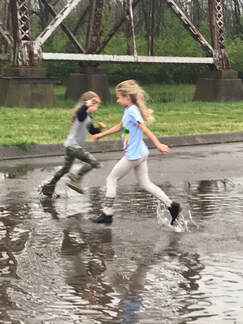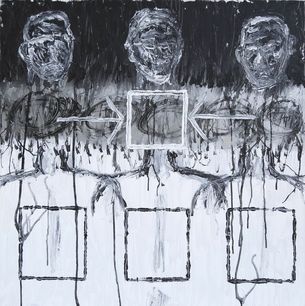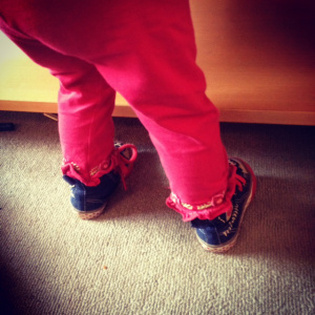|
It can be hard transitioning to manager. It totally shifts the mindset and value-creation principles that so many new managers developed, delivered, and were recognized for in being promoted to manager. The shift isn’t just one of roles. In many ways, it can feel like one of identity. The people we promote to manager typically value what they do, and value the impact what they do has had on the company.
When we promote them to manager, we recognize them for what they have done, but we change what they do. We change how they are expected to add value and have impact. And yet, we rarely slow down to help reframe what it means to be a manager and how that’s different from the work they’ve done to get there. I was having this exact conversation with a new manager when it dawned on me that she was actually expressing a sense of loss in becoming a manager. She felt less impactful in this role, less valuable for “passing off” work to someone else that she had always done herself. So, in some attempt to hold onto her historic value, she kept doing what she’d always done - and just layered her new management duties on top. She was burning herself out, her team was flailing, and she was even considering leaving the company. This is a person who had recently been promoted because of her indefatigable energy and commitment to the company! They love her. She loves them! For nearly a decade, she has found life-purpose and meaning in her work there. She is proud to have helped build the company, to have been there to grind it out with the founders and just make stuff happen for their customers. In other words, she knows how to deliver value and how to feel valuable as a hard-working, dedicated, individual contributor. Now, she’s a struggling manager. It dawned on me that to reboot this transition to manager, she has to redefine her value creation equation – from an equation where she creates direct value to one in which she also creates value through others. I explained somewhat off-the-cuff that as an individual contributor, she delivered one unit of value with one unit of work. As a manager, when she enables one of her people to execute on that unit of work, she creates one unit of value out of the fact that it was executed and another unit of value out of the fact that someone else did it. In other words, as a manager, she is creating more value, not less, when someone else does the work and does it successfully. She looked at me puzzled for a moment, and then a sort of liberated smile flashed across her face. “That’s it!” She exclaimed. “I never thought of it that way. But, that’s it. I know I can’t keep doing what I’m doing. My supervisor has been pushing me that it’s not just about me delivering the work. It’s about the team. I’ve got a great team. I know they want more from me. They want to grow. I’ve just been thinking about it wrong.” So, here’s the simple math: Individual Contributor Value = Work Execution Manager Value = Work Execution + Capacity Building Work Execution Variable:
Questions for a new manager to ask yourself:
0 Comments
A leadership team I support was struggling with a particular employee and the issues had been lingering for several months. This employee had been a positive team member and quality contributor until recently. But lately, the employee’s performance simply hadn’t been good enough. The quality wasn’t there. Her work was often incomplete. It lacked depth and insight. And, it was starting to impact the team as the other members had picked up the slack and, as a result, was feeling the tension with management.
The management team had already let the employee know improvement was necessary. They had started to meet more frequently and to dial up the necessary feedback and micromanagement. But, the more time they spent together, the more the employee seemed to pull back. In other words, as they ratcheted up their formal communication to try to course correct, the informal and discretionary communication all but stopped. The managers didn’t want to fire her, but they didn’t know what else to do. They felt stuck. In a session with one of the managers, we discussed the simple-but-powerful 5 Whys process created decades ago by Toyota to help them drill down to root causes of problems in their manufacturing. The process is so simple, however, that it really works with any problem. Just ask “why” five times, each time asking “why” of the previous answer such that you create a sort of cascade of deeper and deeper problem statements. If nothing else, it can deepen your understanding of the variance and dynamics of a problem to know what part you have the time, energy, and resources to address. In other words, you may not always have the capacity to address the root cause but at least understand that you aren’t addressing the root cause. In this case, the manager took the 5 Whys back to her colleague and they agreed to use it as a structured conversation guide in a meeting with their struggling employee. They introduced the process and the three of them worked together to dig deeper into what was behind the employee’s poor performance. This was the manager’s message back to me: “I tried the 5 Whys in my conversation with this person. My boss was with me as well. So, I just introduced the process and put {the performance problem} up on a whiteboard and started asking why. It was so helpful keeping the conversation focused and not so emotional. And after all of this time where we thought the employee was the problem, we discovered she actually didn’t have all the information she needed to do what we had been asking her to do. It was us! It was our problem! And here we were thinking we were going to have to fire her! Anyway, we left the conversation so much clearer and in a much better place. It was great! Thank you!”  I think we parents need to take a deep breath and step back from the struggle of attempting to school our children at home and help our children’s educations emerge from the real, lived experiences we are all working through. We don’t need to try to be the school teachers we are not, but we can try to be learners and thinkers who reflect on our experiences and are resilient and empathetic and loving and kind, and we can model these lifelong tools and values for our children here and now. No worksheet necessary. Our children will not remember the classroom lessons they learned - or didn’t - in the time of the pandemic, but they very well could carry lifelong lessons in how we all treated each other and managed our way through it - human-to-human - even at a distance. So, to my children, here are some things I hope you are learning in these first several weeks of a new pandemic reality: Your education is far, far bigger than school. There’s a lot to learn during a post-tornado, pandemic-driven quarantine when you live with a senior citizen and have family member with chronic “underlying conditions”. And, while, yes, I want you to practice your reading and keep your math skills fresh, it is a very different kind of learning that will turn tragedy into possibility as your life unfolds. These are times that help illuminate who you are and architect who you will become. Your education is a lifelong process most deeply rooted in presence with whatever life throws your way. Every day matters, and you can’t count on tomorrow. Some days this means you throw caution to the wind, and some days it means you proceed with all due caution. Some days it means you get a puppy. It’s part of your life’s journey to gain the wisdom to know the difference. Your teachers love you. And, your teachers miss you when school is out. And, they are not only willing to do what it takes to deliver your lessons but will even call you on FaceTime and chat for half-an-hour like you are lifelong friends who just needed to reconnect. What you talked about was not the lesson to be learned. That they called is the lesson. Your teachers are creative. Joy and creativity and good teaching go hand-in-hand. Your teachers often work in settings that limit their creativity and steal their joy by focusing their labor on Education rather than enabling their work in helping students learn. Those livestreams and videos and conference calls for you and your classmates are your teachers doing their work in new ways because their work matters to them, to you, to all of us. Their creativity matters - your creativity matters - and school should never take that away. Your parents work hard. (But, that doesn’t make us great teachers.) We work hard because we love you. We work hard because we want to provide for you. We work hard because our work is part of our sense of who we are. Hard work matters, no matter what that work is. If you are going to do something, do it with all you’ve got. Help in whatever way you can help. When you see a difficult situation, ask yourself: how can I help? It doesn’t have to be complicated. But, your ability to help starts with understanding the gifts you bring to the world and figuring out where those gifts can meet the worlds’ needs. If nothing else, you can always be kind. You can always listen. You can always treat others with respect. Even if you can’t do anything, you can always say something. When you don’t feel like you can help or don’t know how, dropping a note or a text and just saying something like “I had you on my mind. Sending my love” is good for you and good for whoever you send it to. Difficult times can make us feel alone and powerless. Your words can help remind you and others that we aren’t. There’s always someone worse off than you. So, there’s really no time or use for complaining. When you think of the frustration of a pandemic and how bad that seems for you, you can also think of your friend and classmate who lost everything in a tornado just weeks before. If you will pause and open yourself to empathy, you will always find someone whose situation makes yours seem relatively manageable. Then, you can ask: how can I help? Friends matter. Our friends tell us something about who we are and where we’ve come from, and when our basic way of life gets disrupted and our sense of who we are and why we are comes into question, connecting with friends can be critically grounding. It matters even if it is virtual. Physical health and mental health are closely related. Getting up every morning feeling isolated takes its toll on a spirit. No amount of food or drink or vice of any sort can rejuvenate the spirit. Such things can soothe temporarily, but they cannot re-spirit us from the inside out. A few minutes of yoga, a walk, a bike ride, a short run, whatever it is - physical health doesn’t have to be long or complicated. Every little bit helps, and it helps our minds as much or more than our bodies.  We live in a culture of more-more-more. As a result, we often think we have to do more to be more, that our personal and professional development amount to an accumulation of experiences. The passive presumption, then, is that that experiences naturally bear the fruits of knowledge, or better yet, wisdom. But, busyness breeds neither knowledge nor wisdom, and “activity without learning is merely a happening” (Myles Horton). Further, busyness can be isolating – even as we are working with others and serving on boards and are always around people, our relationships can become increasingly shallow. We are doing more and relating less. So, if you are looking to get more meaning out of what you do, here is my first challenge: stop focusing on how much you do, and try and figure out how much you’ve learned. Here is my second: find ways to share what you have learned so that what you do matters to the world. Here are a few ways that I invest in figuring out what I have learned from my experiences, what I am continuing to learn from them, and how I can share some of that with others:
We can’t always do more, and doing more isn’t always a good idea. In fact, the cult of doing more often obscures the process of learning, which of course, limits the possibility of teaching. Alternately, if we would all focus our energies on learning and then teaching from what we do, we could all do a lot more with our lives.  And, I promise I will stop trying to convince you. Convincing doesn’t work, and it never has. And, it’s making us dumber. Convincing is a form of coercion. Power imposed. It seeks conquest of the others’ perspective (action), which usually only retrenches the others’ perspective (reaction). Think about a time when you knew someone was trying to convince you of something counter to your beliefs. How did you respond? I know my initial response is usually to defend and challenge, if for nothing else, the sport of it. In fact, I have never been convinced of anything, and, I bet, you haven't either. When it seems like we have been convinced, what has actually happened is that we have learned. Someone has shared a new perspective in a way that we could understand. They have provided new information that we were able to consume. They have posed a question that gave us a safe space to rethink our assumptions. They have done something that has enabled us to reflect on our positions in a way that alters them. Something has happened within us. They haven’t imposed it, forced it, or made it so. They haven’t convinced us. They have provided a prompt and/or an environment in which we could convince ourselves. This is teaching/learning. This is the open exchange of power. In a post-truth America, understanding this dynamic is even more critical. There will always be facts, “facts”, and “alternate facts” that will make any case on anything. We can always find someone on the Internet who agrees with us, or we can say it enough times in enough places that it appears so. This emboldens those who want to convince and bolsters the defense of those who won’t be convinced. The logical conclusion of this dynamic then is a stalemate, the end of teaching and learning, a perpetual confirmation bias arms race with the chilling effect of an intellectual Cold War. Stop convincing. Start teaching. Stop being convinced. Start learning. It’s critical to our relationships and fundamental to our democracy. You’ll never convince me otherwise.  I have spent the last few weeks watching my daughter begin the process of walking, and it has been truly one of the most profound experiences of my life. It’s thrilling. It’s emotional. And, it has given me pause to reflect on why. In her efforts, I see something elemental, but that has nothing to do with the physical act of walking. I see something that is at the essence of her being and yet, as an act, does little to define her. I see a process unfold that is often considered a skill, but is better understood and encouraged as an awakening. My daughter is learning. Her learning is of her. It is within her. And so with her actions, she enlightens me about the critical elements of learning, and in as much, the critical elements of teaching: Curiosity (Internal motivation) - At some point, while sitting on the carpet in our living room, my daughter looks up. She looks up to where my wife and I are sitting, where we put our iPad and the remote control, and yes, where we also put our dinner most nights. She can’t see where all this is, but she knows it’s up there. And, then one day, she just reaches up. New Perspectives - She puts her hands on our coffee table and squirms her body vertical, her muscles unsure of their new relation to gravity. She stands, wobbly, looking around. It is clear in her eyes, she is seeing a whole new world – a world from roughly two feet high that shows her things she has never seen before (without our help), and changes her perspective on the things she has. External Incentives - What is this new world? What is that on the couch? Look at those colors on the pillows! The remote control is fascinating. How can she get it? She wants and needs to explore these objects. She reaches, but her arms are too short. We urge her on with positive messages (and move everything on our coffee table to one side). Struggle - But, it is all still there and it still tempts her. And yet, she stands; her legs beginning to shake in fatigue as she knows neither how to move toward the objects nor how to get back to the safety of the floor. She is stuck. Then one day… the right heel comes off the ground…and then back down. The right knee comes up…but the left one shakes. She cries a moment, unsure. And, suddenly she takes a side step and her hands instinctively shift position to support her along the tabletop. Reflection - “Hmmm…what just happened? I just moved from there to here. Um…I can do this! That thing I just did may get me over there to all the stuff I want to explore.” Within a couple of days, she masters moving from surface to surface to get around the living room. My wife and I have moved everything to higher ground (and also begin noticing every potential danger in the room). Experimentation - After a week or so of pulling up and side stepping around the room, one day she stands, right in the middle of the room. She just stands, holding onto nothing. She looks around. My wife and I hold our breaths. She drops and crawls where she needs to go. But, she keeps doing this again and again as if knowing there is something to it, a new opportunity there, but not sure what it is. Then she stands…a half-step…drop…crawl… Courage and Resilience - So, one day, one of us holds a favorite toy or book out a few feet from her, and she haltingly and hesitantly starts to wobble forward. One step…and down. She gets back up. One…two…three steps…and down. She gets back up. One…two…three…four steps…and down. And today, she continues her process with modest daily improvements but with a confidence that is beginning to surge. The fear and uncertainty that have flooded her countenance are beginning to shift to a look of joy and pride in her efforts and our reinforcement. And, with every new step, her curiosity is again piqued, her perspective expanded and her learning process gathers inertia. Many years ago, I learned a training/facilitation protocol we simply call Comfort/Risk/Danger.
When working with a team, the protocol helps them, based loosely around whatever it is they are trying to accomplish and what kind of work it entails, to share what things put them as individuals in the comfort zone, the risk zone, or the danger zone. For instance, some team members will be totally comfortable with public speaking; for others, it feels dangerous. For some, crunching numbers is comfortable; for others, it would be a risk. Some find conflict dangerous; some find it risky. And, we all know those who are a little too comfortable with it. But, we need speakers; we need numbers people; we need people who create, manage, and support effective conflict. And, we cannot afford for those skill sets to reside with one person or in one department. It’s too easy for them to get marginalized, or to go away completely. Some element of each has to be part of a broader culture. So, as the protocol helps demonstrate, building an effective team cannot just be about capitalizing on what everyone is already good at (i.e. what puts them in the comfort zone). Creating a team is about learning how to support a pervasive element of risk. Humans learn better when there is some level of risk. In the risk zone, we are stretching, challenging ourselves, and actively asking questions and seeking solutions. When we are comfortable, on the other hand, we are surrounded by what we already know. We aren’t actively learning. When we are in danger, we aren’t learning either (social, emotional, and professional danger; not just physical). Fight or flight kicks in. We shut down, seek relief, and avoid (or project our danger onto others). This week, we launched Zeumo in four beta schools with a little over 4000 students, and Comfort/Risk/Danger has been on my mind all week. I have watched and experienced this frame play out not only within the Zeumo team, but with our school partners and their students. How do we launch a new product and company in a way that doesn’t put those of us at Zeumo in danger? How do we support each other’s risk and keep out of danger? How do we offer a new educational technology in a way that doesn’t put teachers or administrators in danger? How do we support them as they risk trying something new? And, for students, how do we…well, for this kind of thing, our students seem to be more capable of staying safely in risk. They are still natural learners. This week and this frame have reminded me why I enjoy teenagers so much. It has also reinforced just how powerful an educator-who-is-still-a-learner can be. We met many this week. And, finally, it has proven to me that new education technologies can and should do more than facilitate business as usual. We must risk working with students in new ways and flexing our own traditional practices to meet their real and current needs. We must be willing to be risky. |
Categories
All
Archives
April 2024
|


 RSS Feed
RSS Feed